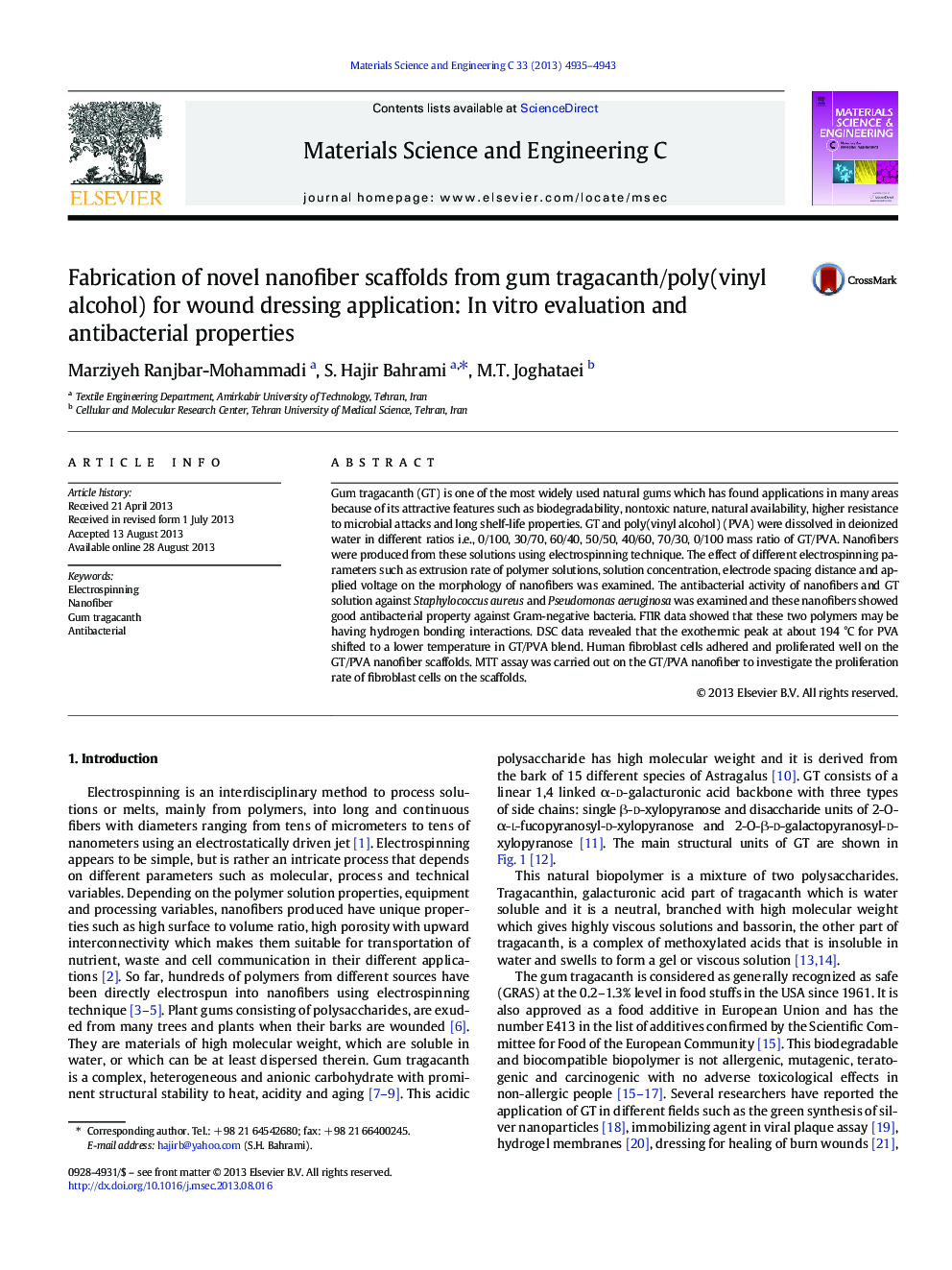| Article ID | Journal | Published Year | Pages | File Type |
|---|---|---|---|---|
| 1429521 | Materials Science and Engineering: C | 2013 | 9 Pages |
•Novel biodegradable scaffolds from natural biopolymer gum tragacanth and poly(vinyl alcohol) were successfully fabricated.•Human fibroblast cells adhered and proliferated well on the GT/PVA nanofiber scaffolds.•MTT assay confirmed nanofibers have cell viability property and biological compatibility.•Biocompatibility and antibacterial properties of nanofibers showed that produced nanofibers are effective wound dressing.
Gum tragacanth (GT) is one of the most widely used natural gums which has found applications in many areas because of its attractive features such as biodegradability, nontoxic nature, natural availability, higher resistance to microbial attacks and long shelf-life properties. GT and poly(vinyl alcohol) (PVA) were dissolved in deionized water in different ratios i.e., 0/100, 30/70, 60/40, 50/50, 40/60, 70/30, 0/100 mass ratio of GT/PVA. Nanofibers were produced from these solutions using electrospinning technique. The effect of different electrospinning parameters such as extrusion rate of polymer solutions, solution concentration, electrode spacing distance and applied voltage on the morphology of nanofibers was examined. The antibacterial activity of nanofibers and GT solution against Staphylococcus aureus and Pseudomonas aeruginosa was examined and these nanofibers showed good antibacterial property against Gram-negative bacteria. FTIR data showed that these two polymers may be having hydrogen bonding interactions. DSC data revealed that the exothermic peak at about 194 °C for PVA shifted to a lower temperature in GT/PVA blend. Human fibroblast cells adhered and proliferated well on the GT/PVA nanofiber scaffolds. MTT assay was carried out on the GT/PVA nanofiber to investigate the proliferation rate of fibroblast cells on the scaffolds.
